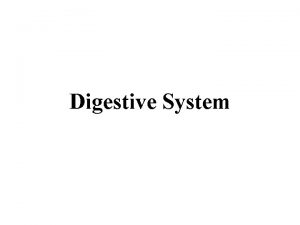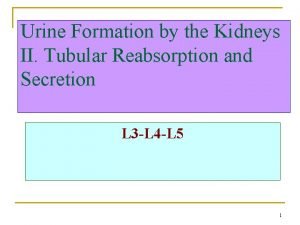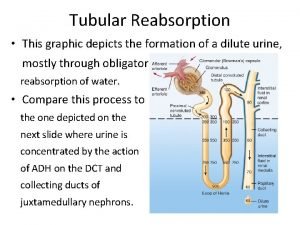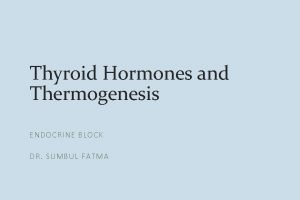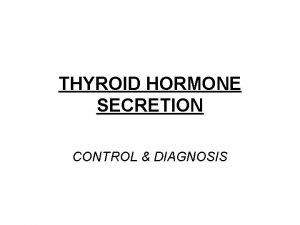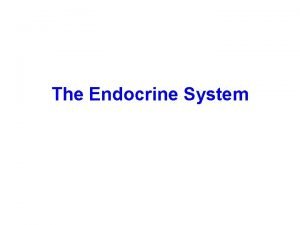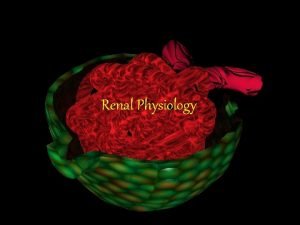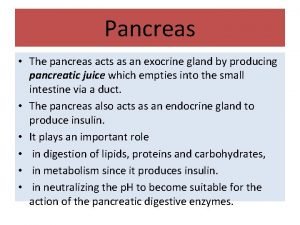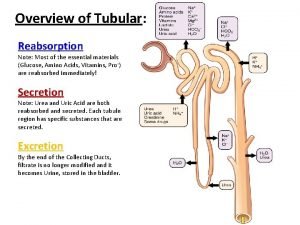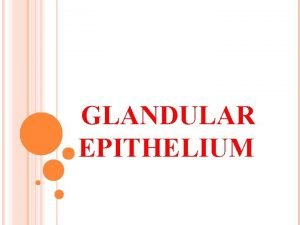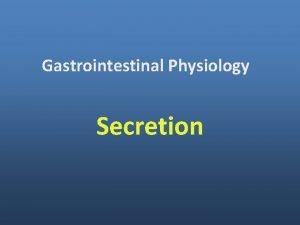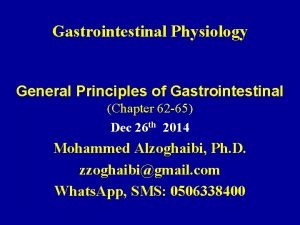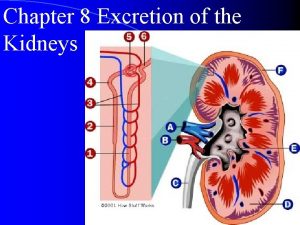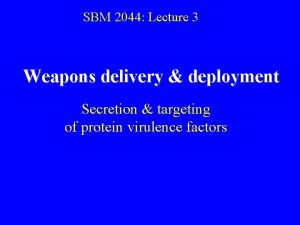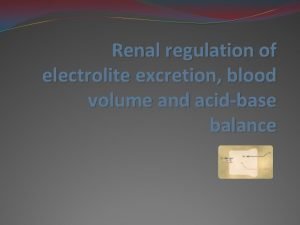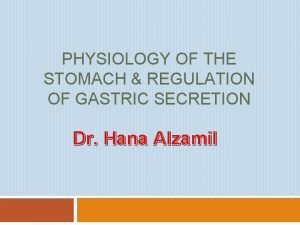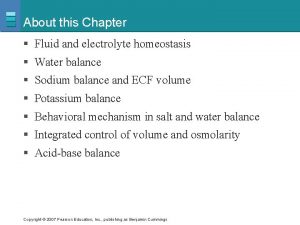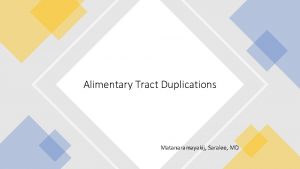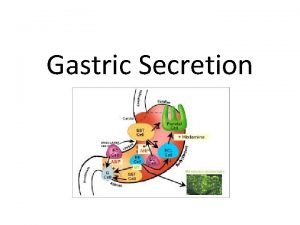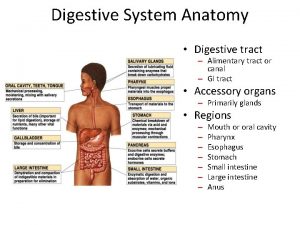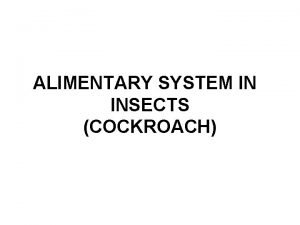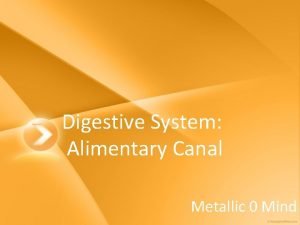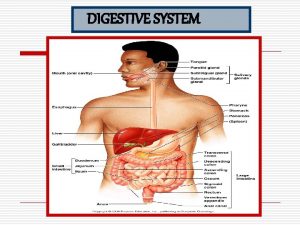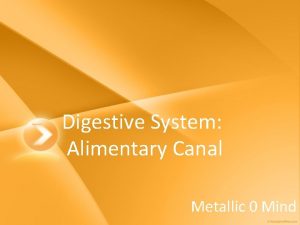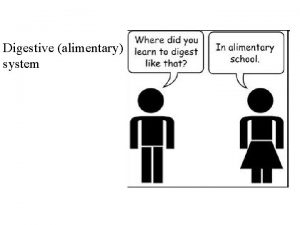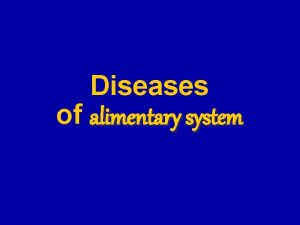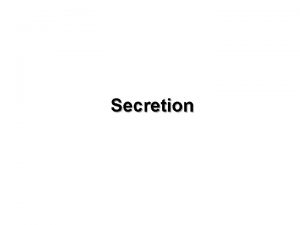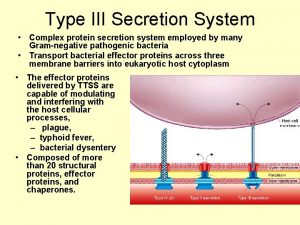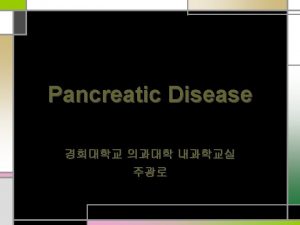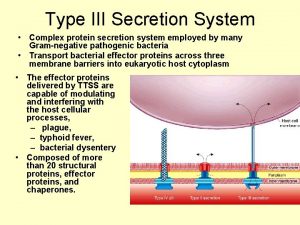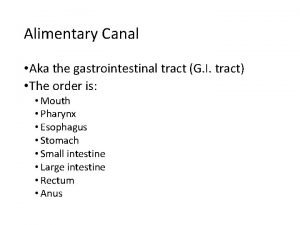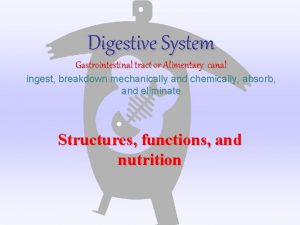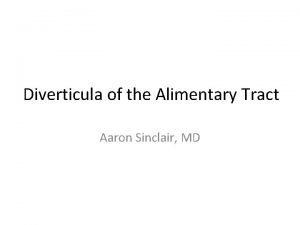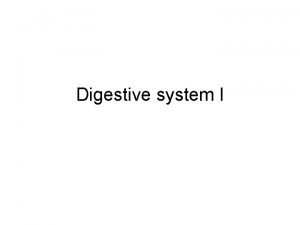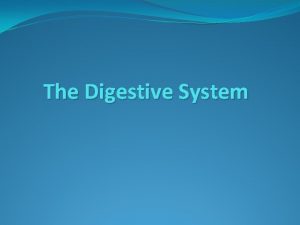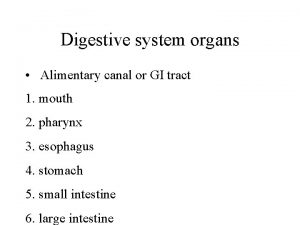GENERAL PRINCIPLES OF ALIMENTARY TRACT SECRETION Throughout the























- Slides: 23

GENERAL PRINCIPLES OF ALIMENTARY TRACT SECRETION

Throughout the GIT, secretory glands have two primary functions: 1. First, digestive enzymes are secreted in most areas of the alimentary tract, from the mouth to the distal end of the ileum. 2. Second, mucous glands, from the mouth to the anus, provide mucus for lubrication and protection of all parts of the alimentary tract. 3. Most digestive secretions are formed only in response to the presence of food in the alimentary tract, and the quantity secreted in each segment of the tract is usually the precise amount needed for proper digestion. Furthermore, in some portions of the gastrointestinal tract, even the types of enzymes and other constituents of the secretions are varied in accordance with the types of food present.



• Autonomic Stimulation of Secretion: • Parasympathetic stimulation increases alimentary tract glandular secretion especially in the upper portion of the tract. • Sympathetic stimulation has a dual effect; alone it slightly increases secretion, and if parasympathetic or hormonal stimulation is already causing copious secretion, the superimposed sympathetic will reduce the secretion. • In the stomach and intestine, several GI hormones regulate the volume and character of the secretions. • The hormones are produced in response to food in the lumen of the gut.



Basic Mechanism of Secretion by Glandular Cells • Secretion of organic substances 1. Diffusion of nutrients from blood vessels. 2. Formation of ATP by mitochondria. 3. Energy from the ATP plus substrates provided by the nutrients, is then used to synthesize the organic secretory substances in the endoplasmic reticulum and Golgi complex of the glandular cell. Ribosomes adherent to the reticulum are responsible formation of the proteins that are secreted. 4. The secretory materials are transported through the tubules of the endoplasmic reticulum to the vesicles of the Golgi complex. 5. In the Golgi complex, the materials are modified, added to, concentrated, and discharged into the cytoplasm in the form of secretory vesicles, which are stored in the apical ends of the secretory cells. 6. Stored in apical ends of cells until stimulated by hormonal or nervous signals.

Water and electrolyte secretion • A second necessity for glandular secretion is secretion of sufficient water and electrolytes to go along with the organic substances. Secretion by the salivary glands, provides an example of how nervous stimulation causes water and salts to pass through the glandular cells in great profusion, washing the organic substances through the secretory border of the cells at the same time. • Hormones acting on the cell membrane of some glandular cells are believed also to cause secretory effects similar to those caused by nervous stimulation.

Lubricating and protecting properties of mucous • Mucus is a thick secretion composed mainly of water, electrolytes, and a mixture of several glycoproteins, which themselves are composed of large polysaccharides bound with much smaller quantities of protein. Mucus is slightly different in different parts of the gastrointestinal tract, but everywhere it has several important characteristics that make it both an excellent lubricant and a protectant for the wall of the gut. • First, mucus has adherent qualities that make it adhere tightly to the food or other particles and to spread as a thin film over the surfaces. • Second, it coats the wall of the gut and prevents actual contact of most food particles with the mucosa. • Third, mucus has a low resistance for slippage, so the particles can slide along the epithelium with great ease. • Fourth, mucus causes fecal particles to adhere to one another to form the feces that are expelled during a bowel movement. • Fifth, mucus is strongly resistant to digestion by the gastrointestinal enzymes. • And sixth, the glycoproteins of mucus have amphoteric properties, they are capable of buffering small amounts of either acids or alkalis; also, mucus often contains moderate quantities of bicarbonate ions, which specifically neutralize acids.

Secretion of Saliva • Saliva Contains a Serous Secretion and a Mucus • Secretion • Principle glands are the parotid, submandibular, • and sublingual (also the tiny buccal glands). • Saliva contains two major types of protein secretion: 1. Serous secretion contains ptyalin (an amylase), enzyme for digesting starches. 2. Mucus secretion contains mucin for lubrication and surface protection purposes.

• Parotid gland is complete serous gland. It secrete almost entirely serous type of secretion. • Submandibular and sublingual glands are mixed glands and secrete both serous and mucus secretions. • Buccal glands are mucus glands and secrete only mucus. • Saliva has a PH of between 6. 0 and 7. 0 which is a favorable range for the digestive action of ptyalin.


Secretion of Ions in Saliva • Saliva contains large quantities of potassium and bicarbonate ions. • Salivary glands acini secrete a primary secretion containing ptyalin or mucin in a solution of ions with concentrations same as that of ECF. • As primary secretion flows through duct two major active transport processes take place i. 1 st sodium ions are actively reabsorbed from all the salivary ducts and potassium ions are actively secreted in exchange for sodium. Therefore, sodium ion conc. of saliva becomes greatly reduced, whereas potassium ions conc. becomes increased. Chloride ions are also passively reabsorbed and their conc. in salivary fluid falls to very low levels. ii. 2 nd bicarbonate ions are secreted by ductal epithelium into the lumen.

• During maximal salivation, salivary ionic conc. chnage considerably because the rate of formation of primary secretion by acini can increase as much as 20 folds. • This acinar secretion then flows through the ducts so rapidly that the ductal reconditioning of secretion is considerably reduced. • Therefore, when large quantities of saliva are secreted, sodium chloride conc. is about one half or two thirds that of plasma, and potassium conc. rises to only four times that of plasma.

Function of Saliva for Oral Hygiene • The mouth is loaded with pathogenic bacteria that can easily destroy tissues and cause dental caries. Saliva helps prevent the deteriorative processes in several ways. • The flow of saliva itself helps wash away pathogenic bacteria, as well as food particles that provide their metabolic support. • saliva contains several factors that destroy bacteria. One of these is thiocyanate ions and another is several proteolytic enzymes—most important, lysozyme—that (a) attack the bacteria, (b) aid the thiocyanate ions in entering the bacteria where these ions in turn become bactericidal, and (c) digest food particles, thus helping further to remove the bacterial metabolic support.

• saliva often contains significant amounts of protein antibodies that can destroy oral bacteria, including some that cause dental caries. In the absence of salivation, oral tissues often become ulcerated and otherwise infected, and caries of the teeth can become rampant.

Nervous Regulation of Salivary Secretion • Salivary glands are controlled mainly by parasympathetic nervous signals all the way from the superior and inferior salivatory nuclei in the brain stem. • The salivatory nuclei are excited by both taste and tactile stimuli from the tongue and other areas of the mouth and pharynx. Many taste stimuli, especially the sour taste (caused by acids), elicit copious secretion of saliva—often 8 to 20 times the basal rate of secretion. Also, certain tactile stimuli, such as the presence of smooth objects in the mouth (e. g. , a pebble), cause marked salivation, whereas rough objects cause less salivation and occasionally even inhibit salivation.

• Salivation can also be stimulated or inhibited by nervous signals arriving in the salivatory nuclei from higher centers of the central nervous system. • For instance, when a person smells or eats favorite foods, salivation is greater than when disliked food is smelled or eaten. • The appetite area of the brain, which partially regulates these effects, is located in proximity to the parasympathetic centers of the anterior hypothalamus, and it functions to a great extent in response to signals from the taste and smell areas of the cerebral cortex or amygdala. • Salivation also occurs in response to reflexes originating in the stomach and upper small intestines—particularly when irritating foods are swallowed or when a person is nauseated because of some gastrointestinal abnormality. The saliva, when swallowed, helps to remove the irritating factor in the gastrointestinal tract by diluting or neutralizing the irritant substances.


• Sympathetic stimulation can also increase salivation a slight amount, much less so than does parasympathetic stimulation. • A secondary factor that also affects salivary secretion is the blood supply to the glands because secretion always requires adequate nutrients from the blood. The parasympathetic nerve signals also moderately dilate the blood vessels. In addition, salivation itself directly dilates the blood vessels, thus providing increased salivary gland nutrition as needed by the secreting cells. Part of this additional vasodilator effect is caused by kallikrein secreted by the activated salivary cells, which in turn acts as an enzyme to split one of the blood proteins, an alpha 2 globulin, to form bradykinin, a strong vasodilator.

Esophageal Secretion • Entirely mucus and provide lubrication for swallowing. • Contains both simple and compound mucus glands. • Main body of the esophagus is lined with many simple mucous glands. In the gastric end and to a lesser extent in the initial portion of the esophagus, there also many compound mucous glands. • mucus secreted by the compound glands in the upper esophagus prevents mucosal excoriation by newly entering food, whereas the compound glands located near the esophagogastric junction protect the esophageal wall from digestion by acidic gastric juices that often reflux from the stomach back into the lower esophagus.

THANK YOU
 Alimentary tract and metabolism
Alimentary tract and metabolism Extrapyramidal vs pyramidal
Extrapyramidal vs pyramidal Dorsal reticulospinal tract
Dorsal reticulospinal tract General structure of digestive tract
General structure of digestive tract Tubular secretion in nephron
Tubular secretion in nephron Where does tubular secretion occur
Where does tubular secretion occur Alpha intercalated cell
Alpha intercalated cell Thyroid hormone secretion
Thyroid hormone secretion Erythropin
Erythropin Msh secretion
Msh secretion Where does secretion occur in nephron
Where does secretion occur in nephron Enterokinase enzyme function
Enterokinase enzyme function Water reabsorption
Water reabsorption Nephron reabsorption and secretion
Nephron reabsorption and secretion Holocrine
Holocrine Gastric secretion
Gastric secretion Components of bile
Components of bile Hydrogen secretion in kidney
Hydrogen secretion in kidney Merocrine glands vs apocrine glands
Merocrine glands vs apocrine glands Type 3 secretion system
Type 3 secretion system Type 3 secretion system
Type 3 secretion system H+ secretion in proximal tubule
H+ secretion in proximal tubule 5 functions of the stomach
5 functions of the stomach H+ secretion in proximal tubule
H+ secretion in proximal tubule



